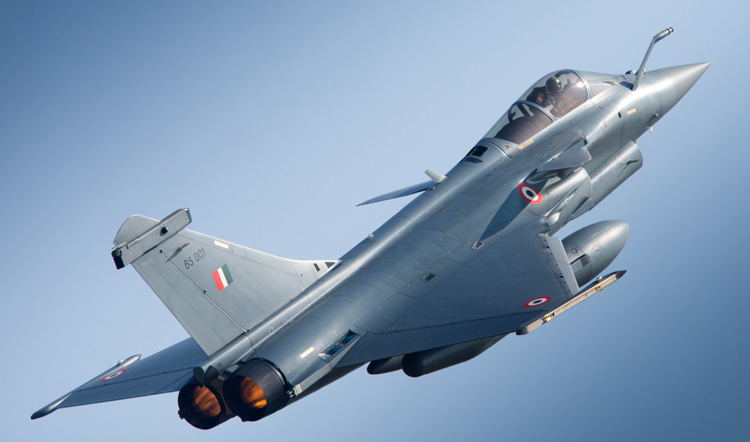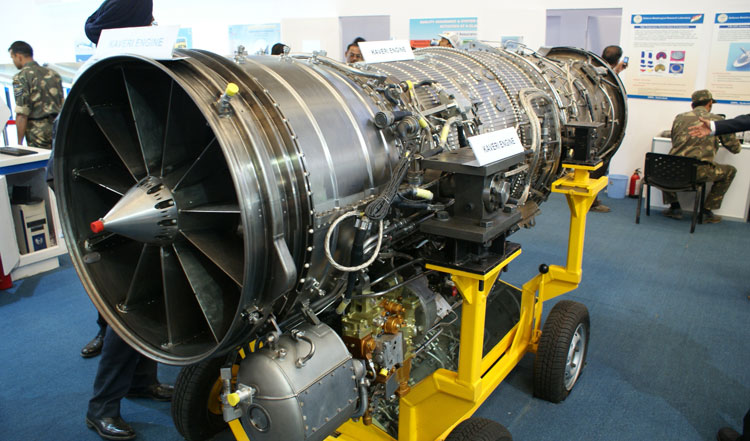INDIAN ARMED FORCES CHIEFS ON OUR RELENTLESS AND FOCUSED PUBLISHING EFFORTS

The insightful articles, inspiring narrations and analytical perspectives presented by the Editorial Team, establish an alluring connect with the reader. My compliments and best wishes to SP Guide Publications.

"Over the past 60 years, the growth of SP Guide Publications has mirrored the rising stature of Indian Navy. Its well-researched and informative magazines on Defence and Aerospace sector have served to shape an educated opinion of our military personnel, policy makers and the public alike. I wish SP's Publication team continued success, fair winds and following seas in all future endeavour!"

Since, its inception in 1964, SP Guide Publications has consistently demonstrated commitment to high-quality journalism in the aerospace and defence sectors, earning a well-deserved reputation as Asia's largest media house in this domain. I wish SP Guide Publications continued success in its pursuit of excellence.
- MoD initiates comprehensive review of Defence Acquisition Procedure 2020, pushes for defence reforms
- G7: The Swansong
- Kalinga Connect: South Asia to Polynesia
- Must Credit DRDO for Operation Sindoor, now what is next for defence R&D?
- The layered Air Defence systems that worked superbly, the key element of Operation Sindoor
- Operation Sindoor | Day 2 DGMOs Briefing
- Operation Sindoor: Resolute yet Restrained
Offsets and Strategic Partnerships
The offset clause in Inter-Government Agreements (IGA) was removed pursuant a report by the Comptroller and Auditor General (CAG) tabled in Parliament, which said several offset contracts built into multiple defence deals had failed to bring in high-end military technology into the country
 |
The Author is Former Director General of Information Systems and A Special Forces Veteran, Indian Army |

Ellen M. Lord, who previously served as America’s Under Secretary of Defence for Acquisition and Sustainment (A&S), told members of the US House Armed Services Committee last month, "India has enormous opportunities but also enormous challenges. We have never been able to get the overarching security agreements with India that we would hope. We have challenges with things like the S-400 being on contract and so forth. Additionally, the challenge of doing business, I can tell you in India is enormous because of ‘offset requirements’ there to be able to provide a local business. So, enormous potential, but I would say the opportunity and the challenge is to work with the Indian government “to streamline policies and procedures, make them consistent” so that it is a pretty predictable venue for US business and government to invest in.”
Offset guidelines were revised to give preference to the manufacture of complete defence products over components
The offset clause in Inter-Government Agreements (IGA) under the Defence Acquisition Procedure (DAP 2020) was removed and a new category for leasing military equipment introduced. Apurva Chandra, Director General (Acquisition) in the Ministry of Defence (MoD) had explained the reasons saying, “No offset contract has led to transfer of technology into the country, with the scope being limited to product purchase as pointed out by the Comptroller and Auditor General in a recent report. There will be no offsets in intergovernmental agreements, government-to-government deals and ab initio single-vendor cases.”
The offset clause in IGA was removed pursuant a report by the Comptroller and Auditor General (CAG) tabled in Parliament, which said several offset contracts built into multiple defence deals had failed to bring in high-end military technology into the country. CAGs critical observations covered a raft of offset contracts, including the September 2016 Rafale deal between 2005 and 2018. Highlights of CAG’s observations are as follows:
- In the 59,000-crore Rafale deal, jet fighter maker Dassault Aviation and weapons-supplier MBDA had not confirmed the transfer of technology (ToT) to the Defence Research and Development Organisation (DRDO), which was part of the offset contract.
- DRDO wanted to obtain Technical Assistance for indigenous development of the Kaveri engine for the Light Combat Aircraft (LCA). Till date the vendor has not confirmed the ToT.
- Foreign vendors who made several offset commitments to qualify for a contract, were later not earnest about fulfilling their commitments.
Media had quoted a MoD official saying that the offset guidelines were revised to give preference to the manufacture of complete defence products over components. Some experts said doing away with offsets could result in savings as foreign military contractors tend to increase their prices by about 10 per cent to cater for offset commitments. But other experts opined that removal of offset clause has “compounded” woes of middle-rung private defence companies as offset related orders played major role in sustaining private industries. It was also said that offsets have immense benefits for the ‘Make in India’ since it breaks the monopoly of the governmental defence-industrial complex that is largely laid back.

In light of the above, Ellen M. Lord mentioning “offset requirements” to the House Armed Services Committee is intriguing, requiring clarification. Has the offset clause been reintroduced and if so, perhaps details the ToT required needs to be spelt out in far greater detail rather than in generic terms. It would also be good to make public, progress in the critical observations raised by CAG concerning the default by Dassault Aviation and MBDA and the technical assistance required for the Kaveri engine. We certainly need to take up these issues with the concerned governments.
The second observation regarding streamlining policies and procedures to make them consistent, by Ellen M. Lord also needs attention, given that this is a recurring problem which ironically remains unaddressed and is the bane of defence procurements.
The second observation regarding streamlining policies and procedures to make them consistent also needs attention, given that this is a recurring problem which ironically remains unaddressed and is the bane of defence procurements
Other than offsets, the Strategic Partnership (SP) model requires serious attention. Media has reported that five years after the SP model was introduced to boost indigenous production through tie-ups with foreign armament majors, not a single project has taken off under the ‘Make in India’ policy till now. Projects identified by MoD under SP model ranged from new-generation submarines and helicopters to advanced fighters and futuristic main battle tanks (MBTs) in long-term joint ventures between Indian companies and original equipment manufacturers (OEMs).
Current status of some of the SP model projects is as under:
- In July 2021, MoD issued Request for Proposal (RFP) to manufacture six diesel-electric submarines with air-independent propulsion for greater underwater endurance under Project-75 India (P-751). The initial estimated cost was 43,000 crore. The RFP was issued to state-controlled Mazagaon Docks and private shipbuilder Larsen and Toubro (L&T), who were to team up with one of the five shortlisted OEMs for submitting techno-commercial bids. OEMs shortlisted were Naval Group-DCNS (France), Rosoboronexport (Russia), ThyssenKrupp Marine Systems (Germany), Navantia (Spain) and Daewoo (South Korea).
- On May 3, 2022, media quoted an official saying, “The French and Russians have formally pulled out of the competition. Two others have also expressed concerns about the technical and commercial conditions.” So, the project is still far away from the actual contract being inked after long-winded initial short-listing and tender process.
- The Navy’s long pending acquisition of 111 armed, twin-engine utility helicopters at a cost of 21,000 crore to replace its ageing fleet of single-engine Chetak helicopters has not even reached the preliminary stage.
- For the 113 new 4.5-generation fighters with some fifth-generation capabilities required with by the Indian Air Force (IAF) for over 1.25 lakh crore, there are seven contenders for the SP model but this has not even been granted the initial acceptance of necessity (AoN).
- In May-June 2021, the Army issued a request for information (RFI) for acquiring 1,770 future-ready combat vehicles or tanks in a phased manner but there has been no further progress.
Five years after the SP model was introduced to boost indigenous production through tie-ups with foreign armament majors, not a single project has taken off under the ‘Make in India’ policy till now
Media has quoted unnamed officials saying:
- All the SP model projects are in doldrums, putting a big question mark on the entire policy;
- For the P-751 project, the time for submission of bids has been repeatedly extended and now stands at June 30;
- The pricing methodology of the SP model policy, notified in May 2017, is flawed;
- Long-term partnership requires assured and repeated orders, which is not permitted under existing rules, and;
- The SP model was initially meant to progressively build capabilities in the Indian private sector to design, develop and manufacture complex weapons for future needs of Armed Forces but the public sector muscled its way in. A look at the entire policy is now needed.
The above highlights the flaws (by default or design) in the SP model that seriously need to be addressed, There is little point in announcing there will be no dearth of funds for Armed Forces, if this is the manner at the execution end.





